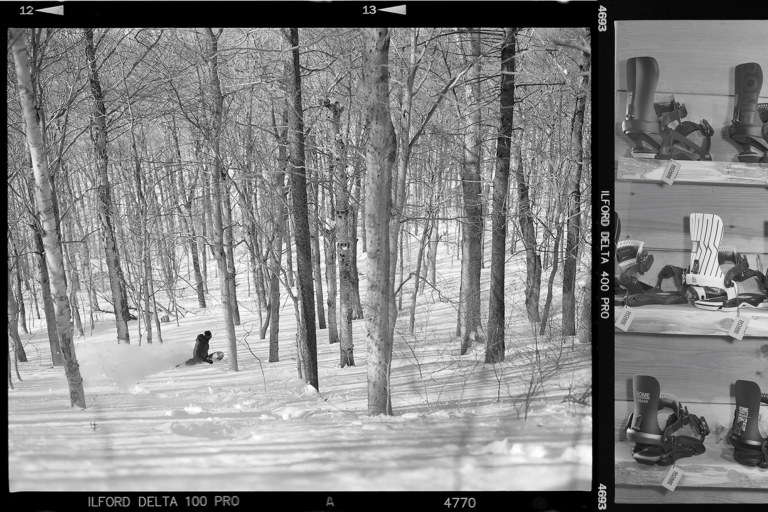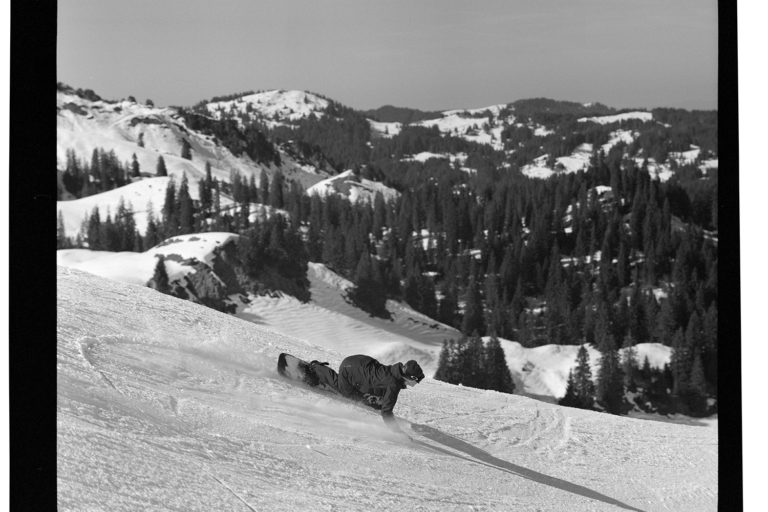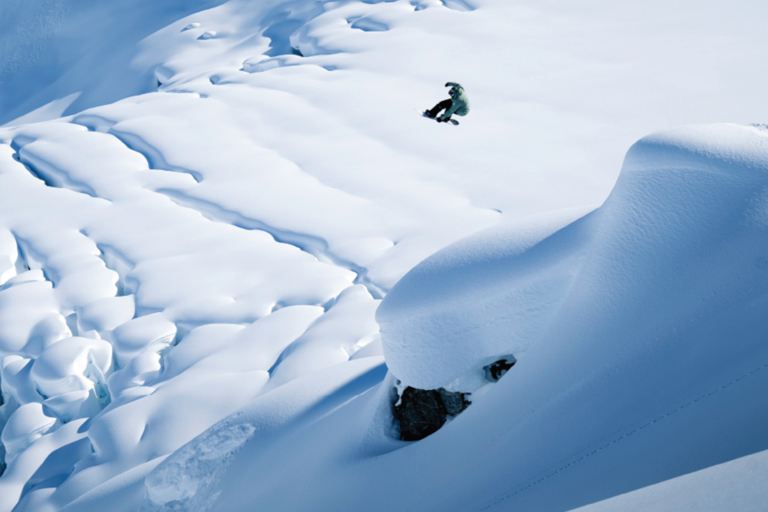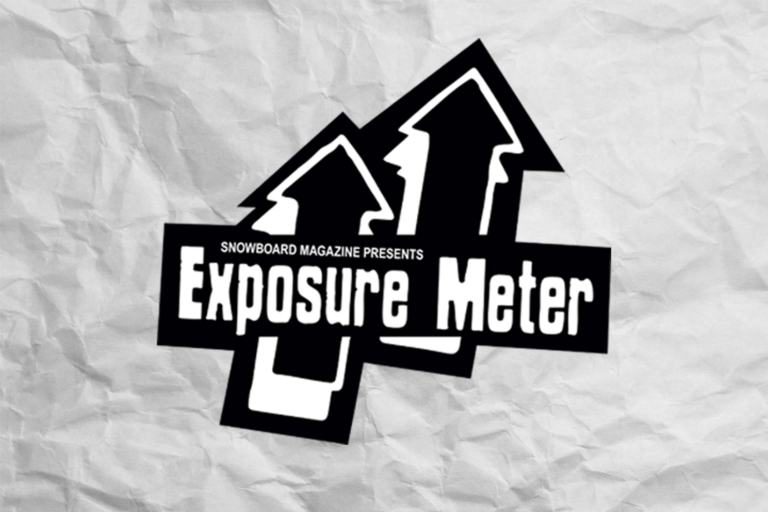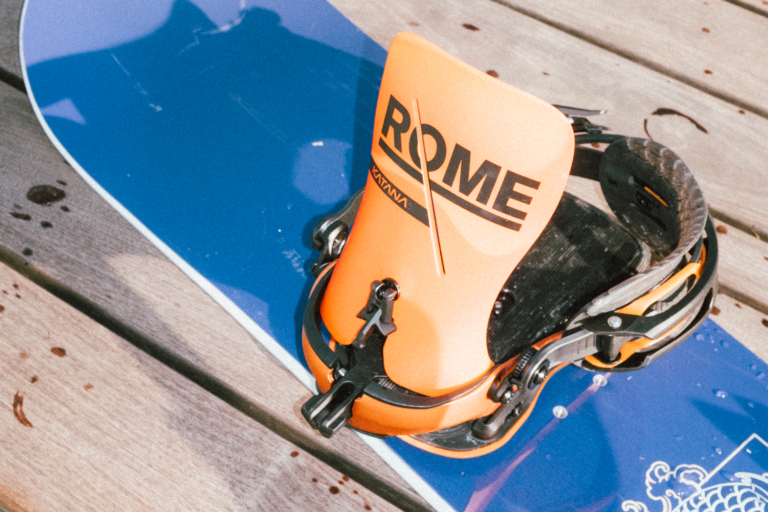Hall-of-famers are a rare breed. To be inducted into any hall of fame, you’ve got to be a trailblazer, a visionary ahead of your time, and most of all, incredibly passionate about whatever it is you’ve dedicated your life to. Going back to the burgeoning days of snowboarding in the late 1980s, women’s snowboarding consisted of a handful of core snowboarders who had no option but to fight for their own space within the sport they loved.
Whether it was in contests or with media coverage, pioneering women Shannon Dunn-Downing and Tina Basich fought for inclusion and the respect women in snowboarding deserve, all while having smiles on their faces. At the end of the day, they were doing what they loved and their passion was contagious, which has been instrumental in not only growing women’s snowboarding, but all of snowboarding.
Last weekend, Shannon Dunn-Downing, Tina Basich, and Terry Kidwell shared the stage as they were inducted into the US Ski and Snowboard Hall of Fame. At the event in Big Sky, Montana, the three pioneering snowboarders were recognized for their ongoing contributions to our awesome sport and culture. We had a chance to sit down and catch up with Shannon about her experience, and what got her to where she is now. – Mike Basher
Shannon! Congrats on the Hall of Fame induction last weekend!
Thank you! I didn’t know what to expect for the Hall of Fame, and it was quite the experience. It really felt special, for sure.
You and Tina Basich are the first two female snowboarders inducted, right?
Yeah, we’re the first two female snowboarding athletes.
That’s quite a statement to both of your careers: the first female pros inducted, as well as at the same time.
Yes, the whole thing is still kind of surreal.
You and Tina have a strong friendship that goes back decades. What was it like sharing the stage in such a special moment with her?
Tina started snowboarding a few years before me, in like 1984 or ‘85. I started in ‘88. I remember watching her; in 1990, I went to the Breckenridge World Championships as a spectator and I saw her riding. That spring, I entered my first pro contest and that’s where I met Tina. It’s actually kind of a funny story. I entered my first pro contest, which was a Body Glove event, and all the pros were there–Craig Kelly, Shawn Palmer, all my heroes. Tina and a bunch of other girls were there, as well. Tina was hiking the pipe and she stopped to rest, and she’s like “Hi, my name is Tina.” I looked around like uh…is she talking to me? She was talking to me! So I introduced myself and I was like, “Oh my gosh, I love your scrunchy. It matches your pants.” And that’s what started our connection.
Haha, sort of a “I carried a watermelon” situation.
Haha! That’s really funny. Then after that, you know, we’d both be at contests, and we just clicked and became immediate friends. We’re still really good friends to this day. So, to share the stage with Tina and Terry [Kidwell] is overwhelming–even more with Terry because he’s like the father of freestyle snowboarding and is such an icon. It’s insane. So, it’s pretty special to be with the two of them, for sure.
All the inspiration that the three of you have provided snowboarding is kind of immeasurable.
Yeah, that’s how I felt being with them, for sure. Tina has impacted my life in so many ways. I don’t know if people realize how important she is to the whole sport because of her connections. She’s such a connector and just has that vision of what it takes to get yourself out there in front of the media and as a woman. That was everything that we needed early on in the sport. She was never afraid to contact any media, whether it was a local photographer, filmer, magazine, whatever. And she’s such a hard worker.

What was the ground level of women’s snowboarding like in 1990 when this all started taking place? Were there already many competitors or were you trying to wrangle your girlfriends to compete?
It was pretty natural. So when I first started competing, it was in the Rocky Mountain Series in Colorado, which my brother was competing in. My friend Betsy, who I started snowboarding with, was always there because she lived locally. Slowly that year, other girls would join in–I don’t know, probably fifteen to twenty girls, like Megan Pischke and Shannon Smith. Shannon would always win. I won my first contest with the alley oop. That was like the big trick.
During the pro contests there were a handful of girls, like Lisa Vincent Guerra, Michelle Taggart, Tina, and Tara Eberhard. There was always strong camaraderie. Even when I was a spectator, I could see the camaraderie they had. It was always a good vibe. I got the courage to say hi to Tara when I was at that Breckenridge contest, and I was really surprised that she stopped to talk to me. I couldn’t even believe it. I was like, Oh my gosh, she’s so nice. She just sat for a minute, you know, “How’s it going? How you doing?” Blah, blah. So that really did stand out when I first started, because it was fun and it wasn’t like most other sports where if you start competing, everyone’s just super serious, you know?
That’s refreshing to hear, especially since snowboarders were in such a minority in those days, and in the early days of snowboarding, we were all developing together.
Yeah. Overall, if you saw another snowboarder at the ski area, you’d connect with them. You’d be like, “Hey! Where are you from?” That’s how snowboarding was, in general. And so on the girl-level it was even more like, “Oh my gosh, you’re a girl!” and if you were a ripper girl, you were definitely going be good friends if you were nice–and if you’re a super jerk, then see you later. There were a few kind of gnarly girls, definitely, but that wasn’t really my style. I wasn’t hanging out that kind of person.
How was it fighting for women’s inclusion in the competitive side of the sport?
The guys have always been accepting and stoked that the girls were a part of snowboarding. Where we ran into trouble was more on the media side. The media oftentimes didn’t want to cover us on TV or in magazines, and event organizers were constantly telling us, “You can’t do that. You can’t go off that jump because it’s too big.” When the superpipe came out and it went from fifteen to eighteen feet, we were at an event in a Nippon Open in Japan. They were like, “No girls allowed.” And I was like, Screw that. I’m riding this thing. And so I poached it, and the contest organizers from Japan were just running after me the entire time. None of the other girls would do it because they told us we couldn’t do it, but I was like, whatever, and just poached it.
I love your Air and Style story from back in the day, where the girls were told no, but you rebelled.
Yeah, that’s just another example of when the contest organizers told us, “You can’t ride. That’s too big,” and we were like, “Whatever, dude. We’re going off this thing!”
Did you ever get the feeling that you were paving the way for future generations of riders, or were you just doing your thing, which ended up paving the way?
It just sort of happened. When Tina and I were together, and the contest organizers said, “You can’t go. It’s too dangerous for girls.” We were like, What did he just say? Now, we don’t care if we kill ourselves on this thing because they just said that. It was a huge jump, like 60 feet, and we’d never seen a jump that big before. And so when we were watching with Tina’s brother Mike Basich, who had been invited, we got out of the car to check the jump out with him, and the guys were hitting it. Our minds were immediately like, Well, I guess we should do this, too. Then, we thought, This is insane. Do you think we can do it? Then the contest organizer came up and says, “What are you girls doing here? You can’t be here. It’s too big for you guys.” So, we snuck up the back of a jump and then the guy is like, “What are you doing here?” We got in an argument with them, and he said we had three tries. “If you can go off the thing, then you’ll be allowed, but you can’t compete. You can be an exhibition.” So that’s how we went off that jump.
That’s some serious persistence and solidarity, sticking with each other to gain acceptance.
We just stuck together and we had a blast. It was great. And then the pro guys up at the top of the jump were like, “Let them go! What’s your deal, contest organizer, dude? “If they think they can go off the jump, they definitely can.” So the pro guys were also in support of us.
Did the slow acceptance by contest organizers invite media acceptance, as well?
Yes and no. Once we got used to the jump, we wanted to do a cool trick for the crowd, of course. I wanted to do a 360, but then you have second thoughts because it’s like, well, if you fall, then girls suck. So I thought, Shoot, I guess I’ll just do a straight air. So that’s kind of the difference. instead of when there are people encouraging you, you kinda like back off a little bit because well, what if I bail? Then I ruin the whole thing, you know? So, really it makes such a difference to have that encouragement, that positive feedback, to push and to progress.

It’s so cool that you and Tina, and so many female pros started, and continue to push women’s snowboarding forward, and what a statement to receive formal recognition for it.
Yeah, so many people ask about how we went against all the adversity back in those days, and I say, ”Well, with a big smile on our face” because there wasn’t something for us girls [in snowboarding], so we had to make it happen. We wanted a job doing what we loved doing, just like the guys were making happen.
It wasn’t easy, though. We’d do a contest and then there’d be like two minutes of video of us [in a sixty-minute show]. The coverage for the girls would be horrible–they’d run the worst shots of us not grabbing, practicing horribly, not our best riding. And then the guys would have the other fifty-eight minutes of the show. So then we came up with a plan to make sure when the video guy was there, we were going off that hit and we were getting a grab so that they’re getting our best riding.
It was a process, trying to get in front of the camera, and I remember overhearing a girl talking about Tina and I, saying that all we wanted to do was be famous. That wasn’t it at all. We were just trying to do the best we could to get coverage for women so we could have a job.

